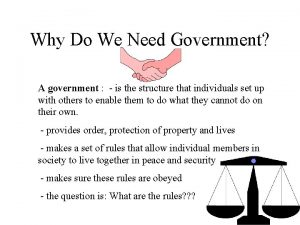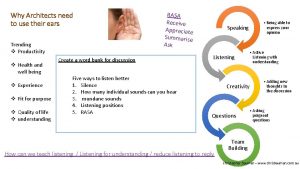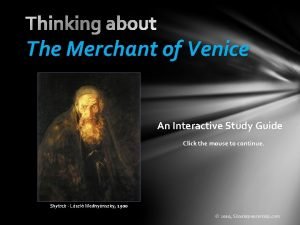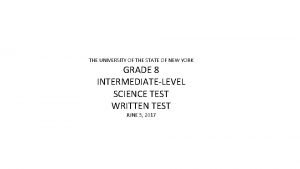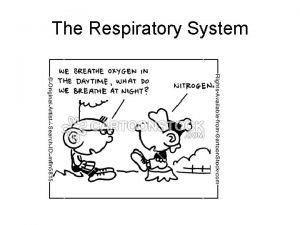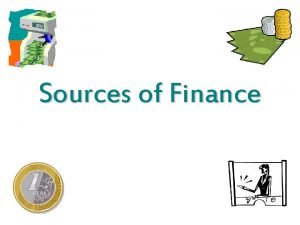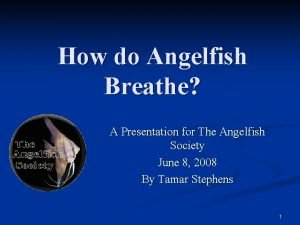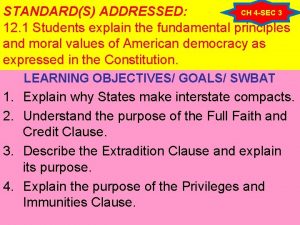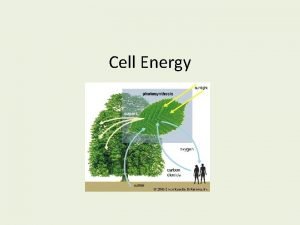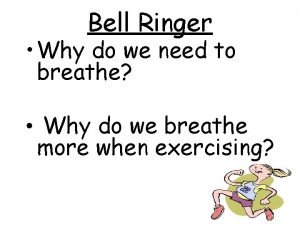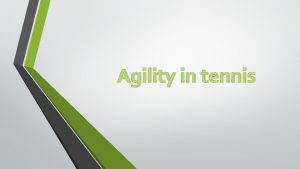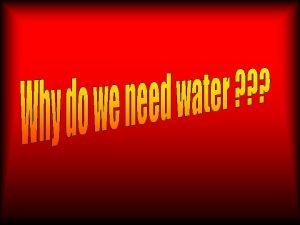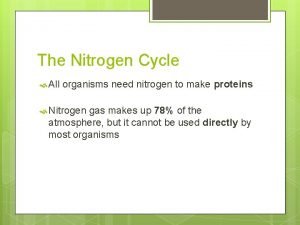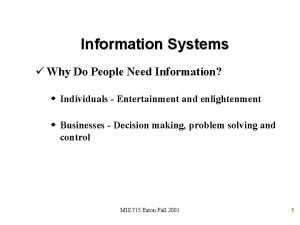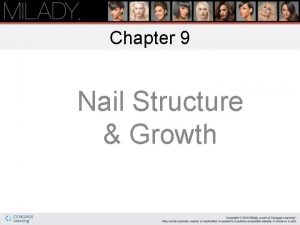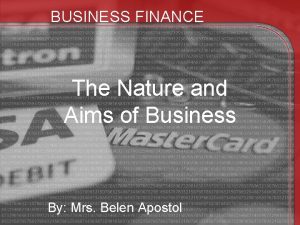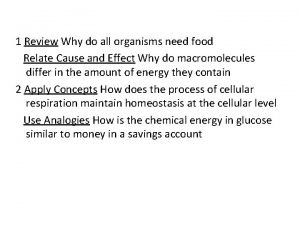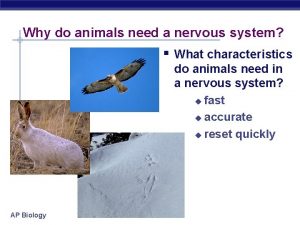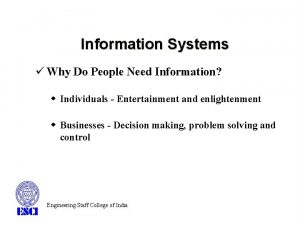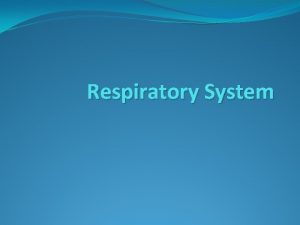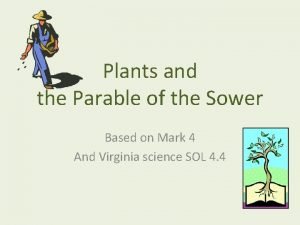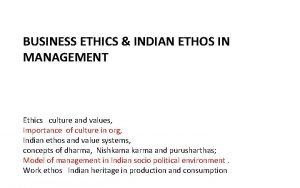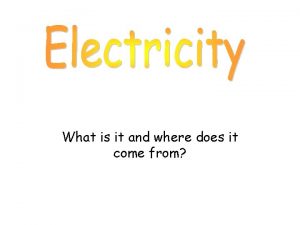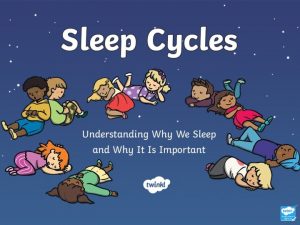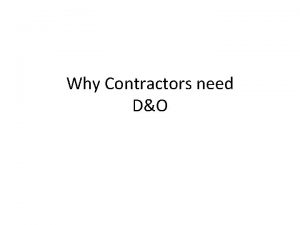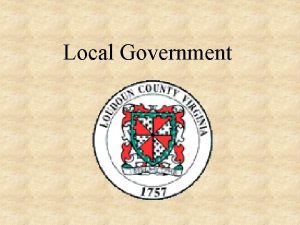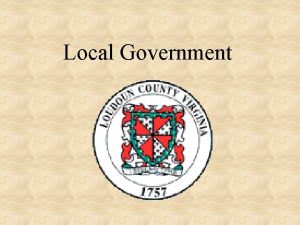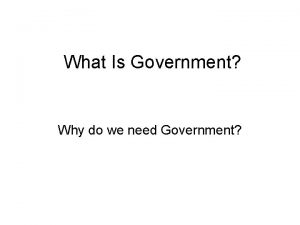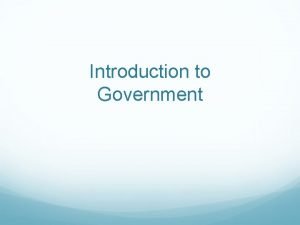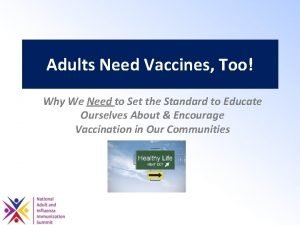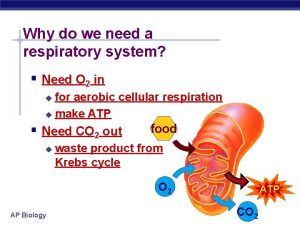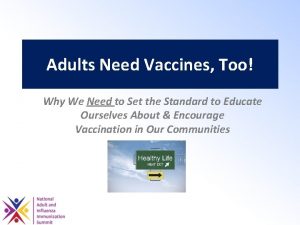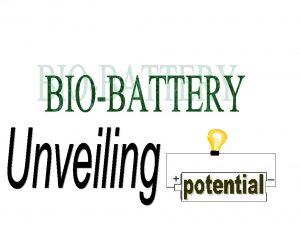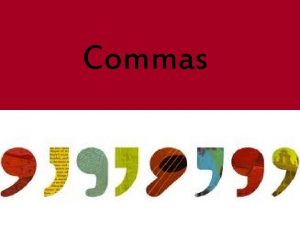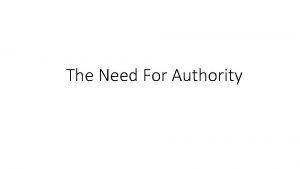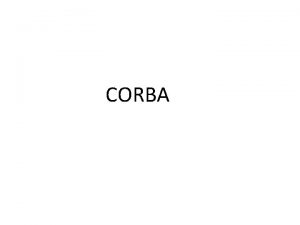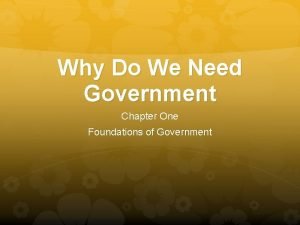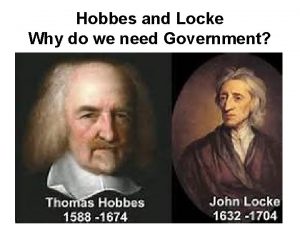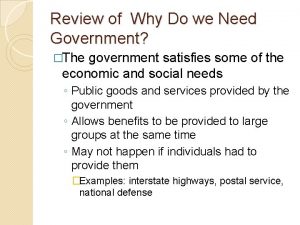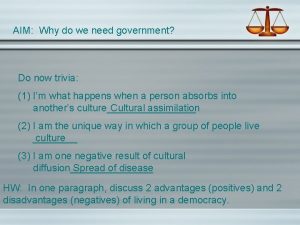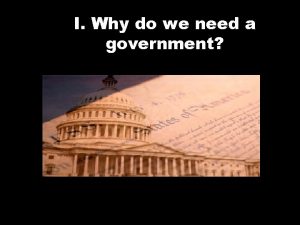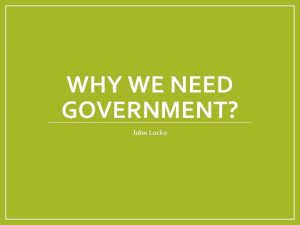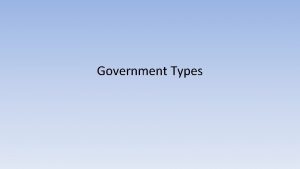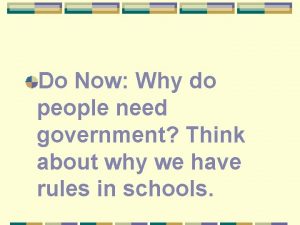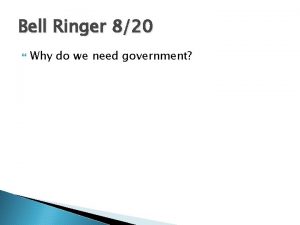Why Do We Need Government A government is





























- Slides: 29

Why Do We Need Government? A government : - is the structure that individuals set up with others to enable them to do what they cannot do on their own. - provides order, protection of property and lives - makes a set of rules that allow individual members in society to live together in peace and security - makes sure these rules are obeyed - the question is: What are the rules? ? ?

Government, Freedom and Equality • Freedom - the belief that the rights of individuals are important • Equality - the belief that individuals have rights to be dealt with in the same way • Intellectual Freedom - Rights of individual to believe in and think about what they wish • Intellectual Equality - protects society from unacceptable expression of intellectual freedom • Economic Freedom - the right to own property, run a business, invest money, or advertise products. • Economic Equality - the right of everyone to have an adequate level of good, clothing and shelter

What are the five significant political ideologies that exist today? • • • communism socialism liberalism conservatism fascism

The Main Differences Between Right and Left Wing Ideologies? Left wing ideologies are often times more supportive of progress and change, whereas right wing ideologies often support tradition and less change.

What is Democracy? · Where people have a say in who rules the nation ·Conservatism, liberalism, communism (theoretically) and socialism are all democratic, but each of the above have differing interpretations of democracy.

What is Totalitarianism? · government that is in complete control of all aspects of daily life in the nation ·fascism and communism (in current practice) are types of dictatorships that may be considered totalitarian.

What Kind of Government does Canada Have? Five Possible Answers: A democracy (people have power) A monarchy (our head of government is a monarch) A parliamentary government (government by the Queen, Senate, and House of Commons) Cabinet Government (members of parliament that carry out the executive functions of government) Federal Government (power to make laws is shared between two levels of government - the national/central government and the provincial governments

What Are the Functions of Government? • Legislative - concerned with making laws or passing legislation • Executive - decides what legislation should be placed before the legislature and puts the laws into effect on a day to day basis, or running the municipality, province or country • Judicial - concerned with deciding whether an individual has broken society’s law and with punishing the guilty.

Executive Branch The Executive Branch is made up of four main components • The Governor General (ceremonial) • Prime Minister (leader of the party with the most seats in the House of Commons) • the cabinet (selected. MP’s that are in charge of gov’t portfolios/departments) • the government bureaucracy (Gov’t departments involved in administration federally)

Legislative Branch Speaker of the House The Member elected by the House to serve as its spokesman and to preside over its proceedings. In particular, he or she is responsible for maintaining order and decorum. As Chairman of the Board of Internal Economy, the Speaker oversees the administration of the House. Speaker Andrew Scheer with the Clerk of the House of Commons, Audrey O'Brien

Page A first year student from one of the national capital region universities employed by the House of Commons to carry messages, and to deliver House documents and other Legislative Branch material to Members in the Chamber during sittings of the House. Cabinetreading Minister Appointed by the Governor General on the advice of the P. M. Usually chosen from among existing Members and Senators, ministers are responsible to Parliament for their official actions and those of their departments. They are Opposition given the title. Party "The Honourable" and membership on the Privy Council for life. Prime Minister A political which iswho neither the Government party nor party part ofhaving the greatest # of The Head of party Government, is ordinarily the leader of the Leader of the Official Opposition coalition parties the Appointed Government. seats in theof House of forming Commons. by the Governor General, the Prime Minister selects the other members of the Cabinet and, along with them, is responsible to the House for the administration of public affairs. The leader of the party with the second largest membership in the House of Commons. Leader of the second largest party in opposition

Clerk and Table Officers The Clerk of the House is the chief procedural adviser to the Speaker and to Members of Mace the House of Commons and Secretary to the Board of Internal Economy. Appointed by theheavy Governor in Council, the Clerk responsible a wide range of administrative A large, and richly-ornamented staffiswhich is the for symbol of authority of the House and procedural duties the work of thethe House its committees. of Commons. When the relating Speaker to takes Chair, Maceand is placed are the clerks who provide procedural during sittings of the on the Table Officers by the Sergeant-at-Arms to signify the House isadvice in session. Press Gallery House, Galleries take the votes and keep the minutes of proceedings. Galleries Hansard The printed record of the proceedings in the House. Remote published Controlled after each sitting. T. V. Cameras Sergeant-at-Arms Senior officer of the House responsible for security & maintenance of the Parliament Buildings Interpreters Seated in glassed-in booths at the south end of the Chamber, they provide simultaneous interpretation of the proceedings into English and French for Members and the public Bar A brass barrier inside the south entrance of the Chamber marking off the area where non-Members may be admitted. It is here that witnesses must appear when formally summoned.

Background to the Legislative Process

Three Criticisms of the Legislative Process • The senate is of little use and should be abolished – distribution of seats is not fair for all regions of Canada – generally a patronage device from the Prime Minister of the time – used to represent business interests

Three Criticisms cont. . . • As a result of party politics, the ordinary Canadian citizen has little influence of what happens in the House of Commons – once citizens elect an MP, the MP’s influence can be limited if he/she is not a cabinet minister or not a member of the governing party.

Three Criticisms cont. . . • Parliamentary committees have little power or influence in the House of Commons. – Argument that since the Cabinet is part of the legislative and the executive, cabinet ministers are too powerful, and ordinary MP’s have little influence, even in a committee

Federal Elections and Political Parties Representative Democracies involve people being elected by a community to represent the community (constituency or a riding or seats) in a legislative body like the House of Commons ·The number of seats a province receives is directly to that of province’s population. However, some province’s number of ridings are not proportionate to the number of ridings that other provinces have or may have lost as a result of population decline. Dissolution occurs when the Governor-General dissolves the House of Commons to call an election. There are usually two reasons why the House of Commons has been dissolved: Once, the governing party is near the end of its five year term and the PM requests the governor-general to dissolve Parliament, or the governing party has been defeated on a major bill. The election takes place within 50 days of dissolution.

Enumeration occurs when “returning officers” begin preparing voter’s lists in preparation for an election. Voters vote at polling stations. Nominations occur when candidates from one political party in a constituency decide who will represent the party in the elction for the constituency’s seat. If someone wants to run without being affiliated to a party, they are called “Independents” Campaigning takes place within the 50 days as candidates from each party within a constituency campaign in the community for votes

Canadian Political Parties Historically, there have been two main parties • The Conservatives • The Liberal Party Formerly led by Pierre currently led by Trudeau, now by David Stephen Harper. Ignatief. The standings in the House of Commons currently sees the Conservatives with 143 seats, the Liberals - 76, Bloc Quebecois - 50, the NDP – 37 and 2 remain as independents.

Conservatives • First Canadian PM, John A Macdonald was a Conservative • the Conservatives are more right-to-center of the political spectrum.

Liberals • First liberal PM was Alexander Mackenzie. Other notable Liberal PM’s include Wilfred Laurier, William Lyon Mackenzie King and Pierre Trudeau (all of whom served lengthy stays in Ottawa as PM’s)

New Democratic Party • Originally called the CCF (Co-operative Commonwealth Federation) that originated in Saskatchewan. • First leader of the revised NDP was Tommy Douglas

How Political Parties are structured Political parties must be structured well by being well-organized, wellfunded and well-led. • Organization – two parts to a party: • Parliamentary Wing (all members of Parliament of the party or caucus) • Extra-Parliamentary Wing (people who belong to the party that don’t sit in the House of Commons. ) Within this party is even more structure including constituency associations, provincial associations, and national associations. National Conventions occur where selected party members from both the parliamentary and extra-parliamentary wing elect party officials and establish and develop party policy.

• Funding – Political parties are expensive to maintain. Included in costs that parties have to deal with are costs for: salaries for party workers, election campaigns, and leased or rented office space. Funding comes from donations. • Leadership – Leadership conventions occur when the party leader resigns or is forced out. Candidates often are current or former MP’s or provincial premiers. More rarely, leaders are elected as leaders from private industry.

The Canadian Constitution

Constitution: the basic principles, laws, and rules by which the country is governed. It usually says what the powers and duties of the government are and what the rights of the people are. “Written” constitutions involve principles and laws that can be found in one document (U. S. ). Canada’s constitution is both written and unwritten.

The “written” part of Canada’s Constitution is the Canadian Act of 1982. Once section of this act, the Constitution Act of 1982 provides a Charter of Rights and Freedoms, which sets out the legal and democratic rights of Canadians. The most important was the act that created Canada in 1867. The British North America Act. Before: it could only be changed by the British Parliament. Now: it was re-passed in the Canadian Parliament and can be changed by us.

The BNA Act was renamed to the Constitution Act of 1867. “Unwritten” Constitution - the BNA Act of 1867 says that Canada would have a constitution similar to Britain’s. These words indicated responsible government with a Cabinet and House of Commons. Because no one document outlines responsible government and its operation, we say that it is “unwritten”.

The BNA Act forms the backbone of the Canadian Constitution. It was created in 1867 and created the Federation of Canada. All in all, the BNA Act has 147 sections, but these sections can be listed into only eight categories. They are: • Union - combination of the former BNA colonies at the time - Ontario, Quebec, New Brunswick and Nova Scotia) • Executive - Canada would remain a nation with Britain’s Queen/King as its head of state (Governor General represents her) • Legislative - Parliament’s existence, plus elections at least every five years. • Provinces - existence of Lieutenant Governor and provincial legislatures.
 Hey bye bye
Hey bye bye Why do we need a government
Why do we need a government Dont ask why why why
Dont ask why why why Why architects need to use their ears
Why architects need to use their ears Shylock image by sir john gilbert printed in 1873
Shylock image by sir john gilbert printed in 1873 Which principle
Which principle Why do we need to breathe
Why do we need to breathe Why do businesses need finance
Why do businesses need finance Why we need computer
Why we need computer Lamillae
Lamillae Why do we need arrays?
Why do we need arrays? Why might states feel the need to form compacts
Why might states feel the need to form compacts Why does a cell need energy
Why does a cell need energy Why do we need to breathe
Why do we need to breathe Agility in table tennis
Agility in table tennis We need to water
We need to water Why do organisms need nitrogen?
Why do organisms need nitrogen? Why do people need information
Why do people need information Why do we need cracking
Why do we need cracking Specialized ligaments attach the nail bed and
Specialized ligaments attach the nail bed and Nature and aims of business
Nature and aims of business Why do organisms need food?
Why do organisms need food? Why do animals need a nervous system
Why do animals need a nervous system Objective of size separation
Objective of size separation Why do people need information
Why do people need information Why do cells need oxygen?
Why do cells need oxygen? Plants
Plants Why do we need indian ethos in our management
Why do we need indian ethos in our management Why we need electricity
Why we need electricity Why we need sleep
Why we need sleep

